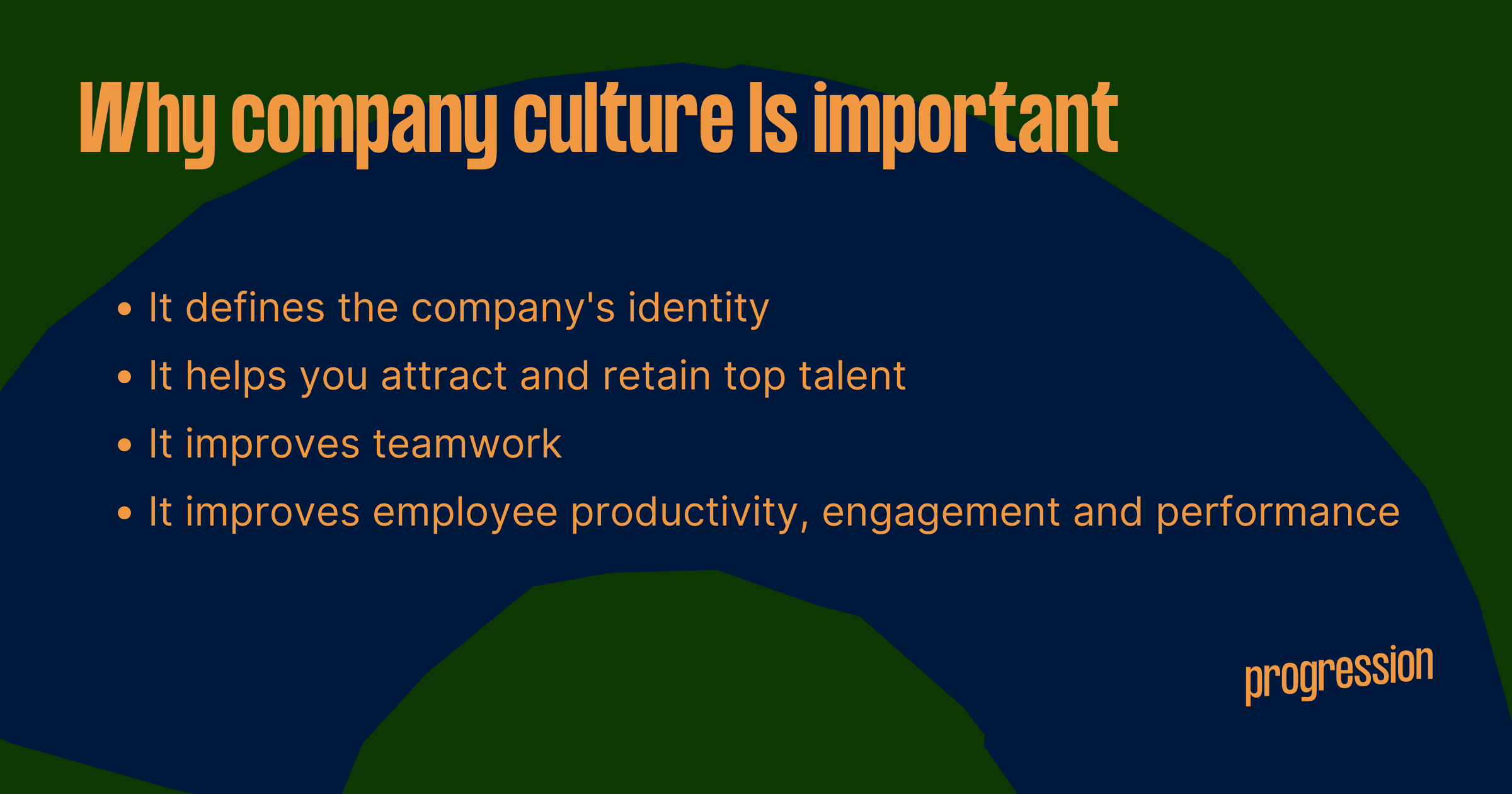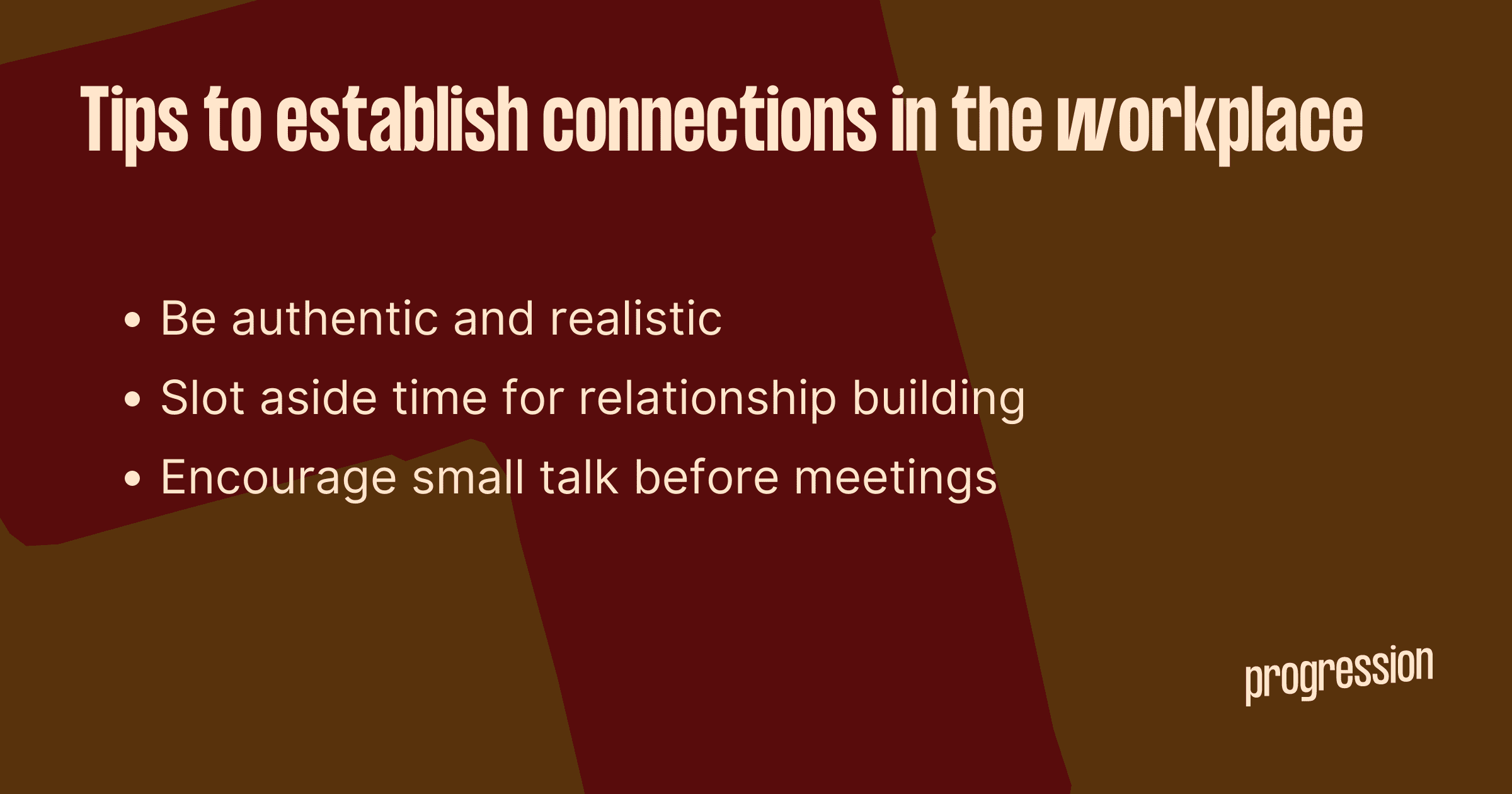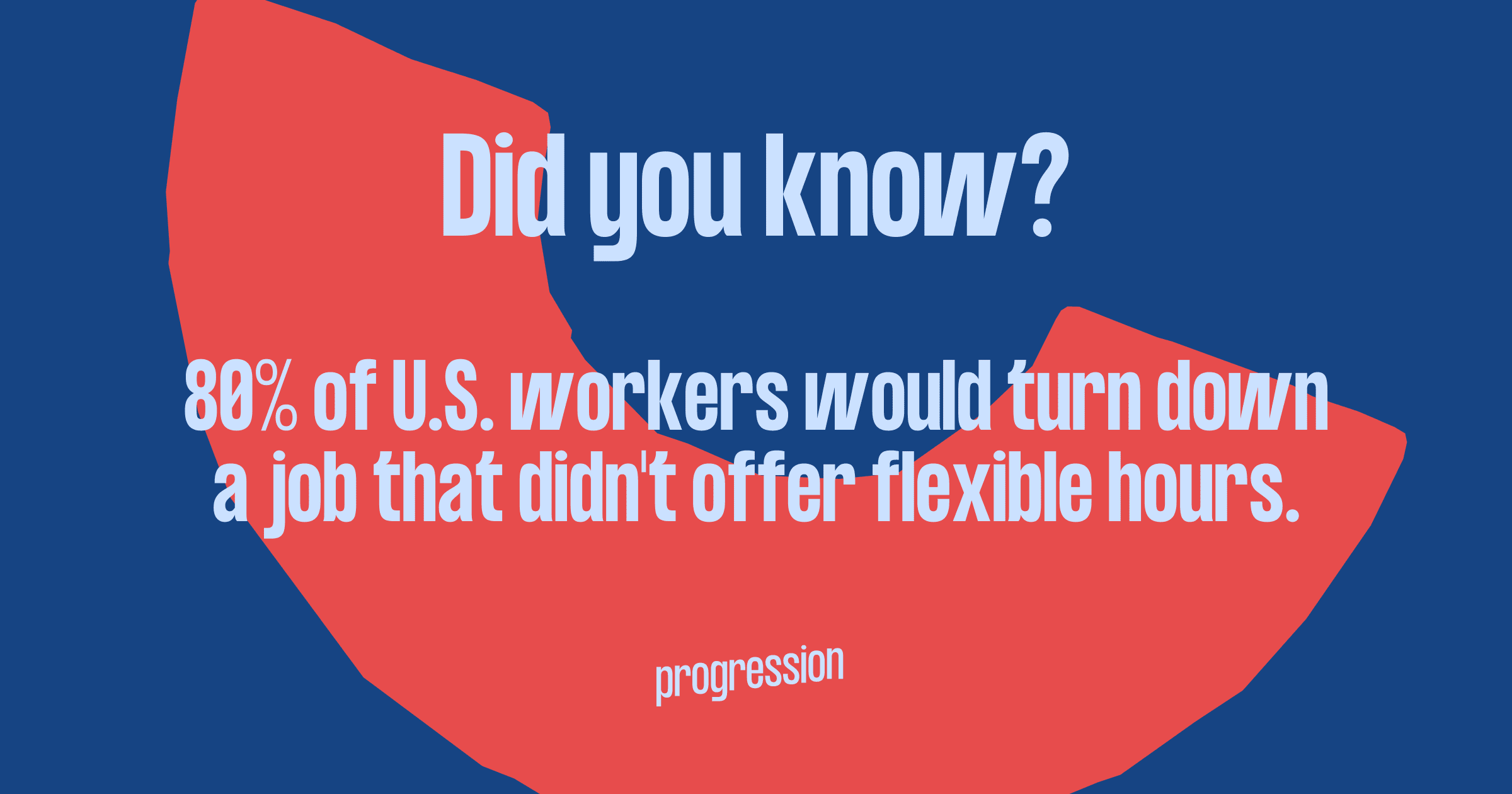Higher job satisfaction, stronger social interactions, improved employee morale and reduced workplace stress are just some of the benefits of having a good company culture.
On the flipside, an unhealthy work culture will hit you in more than just your wallet. For instance, not only will employee productivity and work performance decrease, but you can also say goodbye to attracting top talent. (Company culture matters more than pay these days.)
Luckily, it’s not too late for an intervention. And what better time than the present to get started?
Learn all about building a good company culture that prioritises employee growth here, including nine tips to build a culture that your employees (and future employees!) and the leadership team will be proud of.
What is company culture?
Company culture is defined as the shared values, beliefs or perceptions held by employees within an organization. In other words, it’s the “social glue holding an organization together.”
There are many things that make up workplace culture, and it differs from company to company. Mission, vision, structure and leadership are just a few standard components.
But in the end, the best company culture puts employees at the centre, helping them accomplish their goals while still advancing those of the business. (Let’s move onto the next section before we get ahead of ourselves…)
Why is company culture important?

Organizational culture is important for long-term business success for the following reasons:
It defines company identity
By definition, company culture outlines the appropriate way to act within an organization. As in, how everyone is expected to behave is properly defined, both C-suite management and employees.
After all, these shared beliefs and core values are at the root of everything a company does. Actions speak louder than words.
It helps you attract and retain the best talent
Having a good company culture gives your organization a competitive edge when it comes to attracting new employees and retaining top talent.
Simply put, people want to work with companies that genuinely care about the overall employee experience. Treat them well, and they’ll stick around, effectively reducing your turnover costs. (Research shows that total costs associated with turnover range from 90-200% of an employee’s annual salary...)
It improves employee productivity, engagement and performance
Strong organizational cultures are linked to higher rates of productivity, engagement and performance. This is simply because your employees feel heard, inspired and supported.
So, they’ll care more about what they do and who they do it for. (Read between the lines, and you’ll see that equates to more financial success long-term.)
Don’t believe us? Here’s proof that positive work cultures are more productive.
It improves teamwork
When you have good company culture, team members are much more inclined to come together and communicate openly to work toward a common goal.
They know their contributions are valued, and there’s mutual trust among everyone to do a good job.
Nevertheless, the real magic comes not by solely recognizing the importance of company culture, yet actually building one that prioritises employee growth. The following tips should help.
9 tips for building a culture that prioritises employee growth
Building a workplace culture that prioritises employee growth doesn’t happen on its own. Management needs to be intentional about it every step of the way.
Here are 9 tips to make it happen:
Improve role fit
Encourage employees to focus on work they’re passionate about, and find opportunities for them in these areas as well (even if it means going out of your way to do so).
For instance, if you have a human resources manager who enjoys outreach more so than conducting actual interviews, increase the number of outreach tasks they do.
In this way, you’re supporting their interests and allowing them to provide the most value in the business.
Recognize and reward good work
Having an employee recognition program or simply acknowledging good efforts will heighten employee satisfaction and make team members feel valued in your company.
And unsurprisingly, recognizing employees is a high-impact, low-cost way to improve organizational performance. Quite literally, a little goes a long way…

Focus on engagement and provide frequent employee feedback
Developing and sustaining employee engagement is crucial to retain high-performing talent, improve organizational performance and foster customer loyalty.
Oftentimes, it’s up to management to take the lead on identifying skills gaps and visualising requirements, then relaying that info to their team members. Luckily, measuring and providing feedback just got easier by tracking employee career progression with frameworks.
With frameworks, employees are longer in the dark regarding core skill requirements and expectations, and managers have hard data to base their feedback on.
And because there is full transparency involved in the building of the framework, this allows for immediate and regular assessment. (Taking things further, this feedback can then be used to develop a roadmap so the employee can better see their career trajectory.)
Connect employee roles to company goals
Basically, your employees should know how their position fits into the grand scheme of things. How do their responsibilities achieve company goals?
By clarifying this, employees will have a greater sense of purpose in the office. And they’ll know that their contributions are meaningful.
Establish connections in the workplace

To build a good company culture that prioritises employee growth, intentionally strengthen workplace relationships.
This means in addition to office celebrations and team-building activities, help your company build the social ties you need at work by:
- Being authentic and realistic
- Encouraging small talk before meetings
- Slotting aside time in employee schedules for relationship building
Coincidentally, establishing positive relationships in the workplace will also indirectly improve employees’ health. People with stronger social relationships are at a decreased risk of cardiovascular disease, infectious illnesses, cognitive decline, elevated blood pressure and more.
Embrace transparency
There are 10 things transparency can do for your company.
Increasing workplace happiness is just one of them. Others include building trust, encouraging a more organic online presence, and improving customer relations. (After all, people buy from brands – a.k.a. other people – they like and trust.)
Having a good company culture that prioritises employee growth can also include transparency when it comes to compensation. Pay transparency benefits businesses by establishing trust between employers and employees, increasing productivity and promoting diversity, among other benefits.
Embody a flexible work environment
COVID-19 forced the issue for a lot of organizations considering flexible working environments (and for a lot of organizations that weren’t!).
Barriers between office lives and home lives came down, and employers awoke to the realisation that workers have lives outside of the office and need to achieve a healthy work-life balance. This is why it’s so important you embody a flexible organizational culture.
Let your working parents know it’s OK to start their days later or take off early to catch an extracurricular activity. Reassure your travel lovers that finishing early on Friday to catch their much-anticipated evening flight is fine. And let your account manager ward off a nasty headache Wednesday morning before clocking in.
Whatever the reason, honour it. After all, you hired them to deliver outcomes, not just to warm their seats.
And just so you know, companies are losing top talent over inflexible work schedules. Plus, 80% of U.S. workers would turn down a job that didn’t offer flexible hours. (Let that one brew for a bit…)

Build a learning culture
A culture of learning is centred around just that: learning opportunities.
This will not only help your company thrive in the quick-changing business world, but also help employees feed their minds and build their skills.
Some tips to create a learning culture include:
- Encouraging employees to improve knowledge, skills and abilities (KSAs), not KPIs
- Getting buy-in from management
- Communicating your goals
- Continually measuring and adapting
Take action to protect employees’ health and wellness
Your employees’ health and wellness are at the crux of your business strategy and operations. Truth is, you can’t operate to your fullest potential without your team members being at theirs.
Which is why it’s so important to emphasise employee wellness to foster great corporate culture.
Protect employees’ health and ensure that your team members have the tools, resources, and healthcare options they need to live their best lives on and off the clock.
And when you factor in high well-being with engaged employees, you’ll improve business outcomes.
Words of advice going into 2022 and beyond
The conversations surrounding building a good company culture that prioritises employee growth have only been fuelled by the pandemic.
The good news? Any company of any size in any industry with any budget can work on building a positive culture, one in which all members feel supported, heard, and understood.
The bad news? Well, there is none. That is, as long as you prioritise building a culture that supports employees’ growth. (Otherwise, turnover turmoil and nonstop job vacancies will be your new norm…)
Long story short, be the change you wish to see in the workforce, and you’ll be rightly compensated with the hard work, admiration and trust of your most important stakeholders: your employees.






